Archive
Association of Jewish Artists and Fine Art Lovers (ARTA)
- Association of Jewish Artists and Fine Art Lovers (ARTA)
ARTA
- Association
Seven Jewish artists living in the so-called Shanghai Ghetto joined together to form an art association in 1943. The founding members were: David Ludwig Bloch, Paul Fischer, Fred Fredden Goldberg, Ernst Handl, Max Heimann, Hans Jacoby and Alfred Mark.
Word Count: 38
Whiteaway, Laidlaw & Co., Nanking Road, International Settlement (now 100 Nanjing Dong Lu, Huangpu Qu) Shanghai
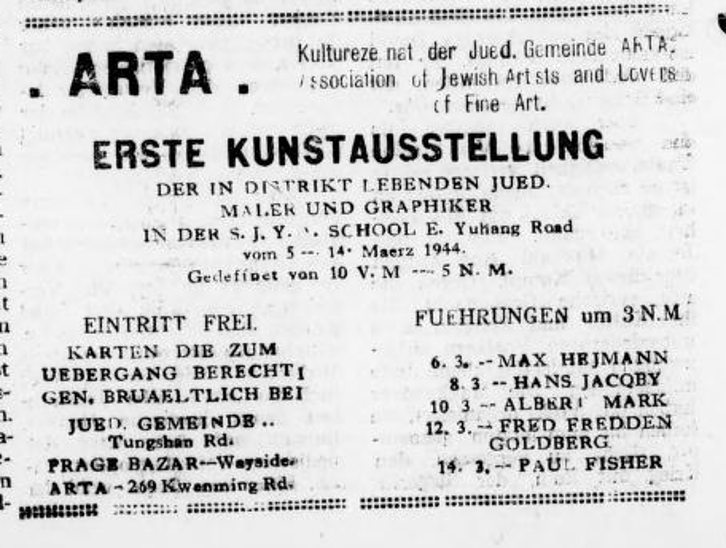
Advertisement, First ARTA Exhibition,Jüdisches Nachrichtenblatt, 4 March 1944, vol. 5, no. 9, p. 4. Entrance was free of charge. An entrance ticket authorised the residents of the designated area to leave it in order to get to the exhibition venue at the S.Y.Y.A. School at East Yuhuang Road, which was only a short distance away. 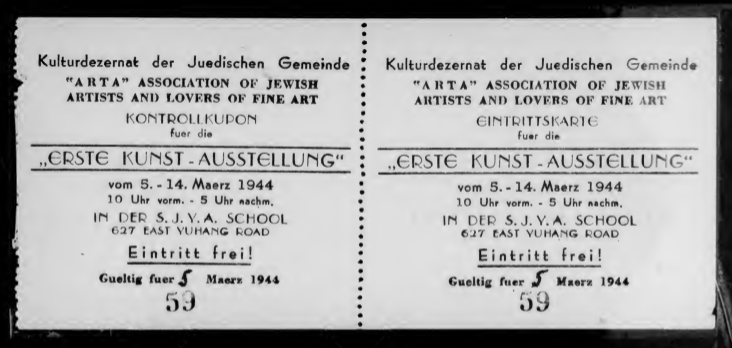
ARTA, ticket, Hans Jacoby Collection, Box 1, Folder 5 (© Leo Baeck Institute, New York). 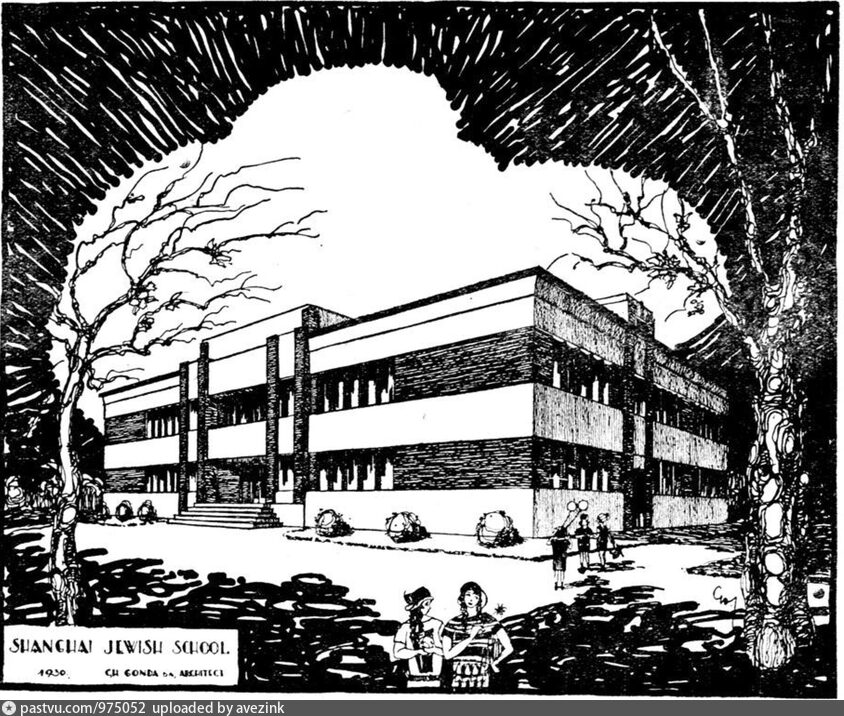
C. H. Gonda, Shanghai Jewish School, drawing, 1931, Seymour Road, Shanghai. Venue of the first ARTA exhibition in 1944. 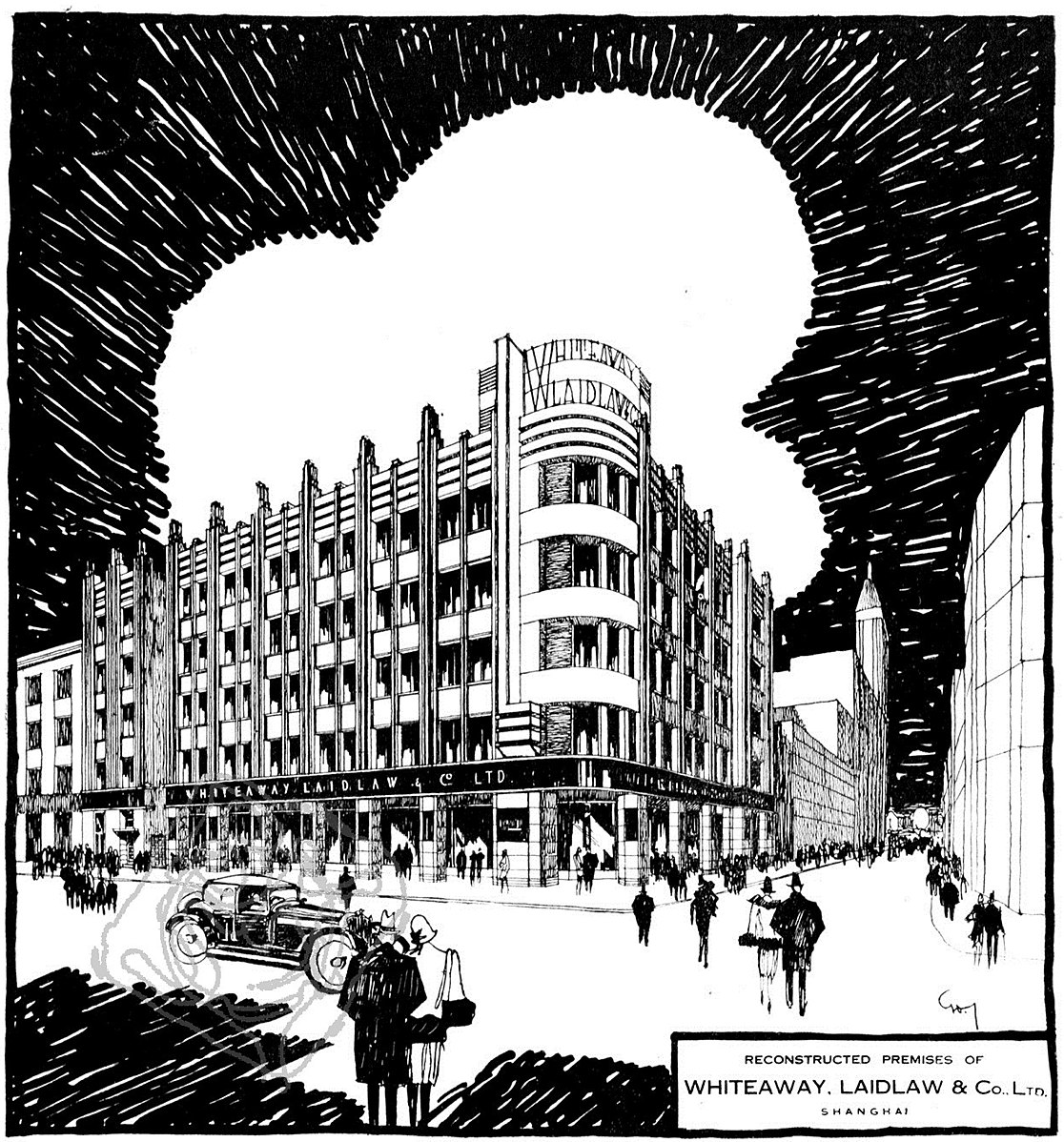
C. H. Gonda, Whiteaway, Laidlaw & Co., drawing, 1930, Nanking Road, Shanghai. Venue of the second ARTA exhibition in 1944. 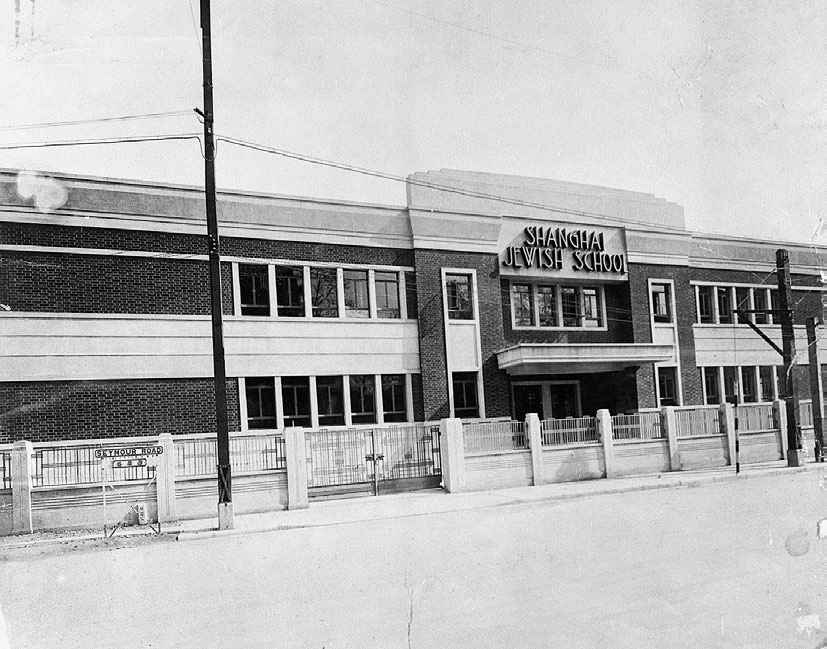
Jewish School, photograph, 14 January 1931, Seymour Road, Shanghai. 
Ernst Handl, Self Portrait, drawing, 15 September 1943, Shanghai, Hans Jacoby Collection (© Leo Baeck Institute, New York). 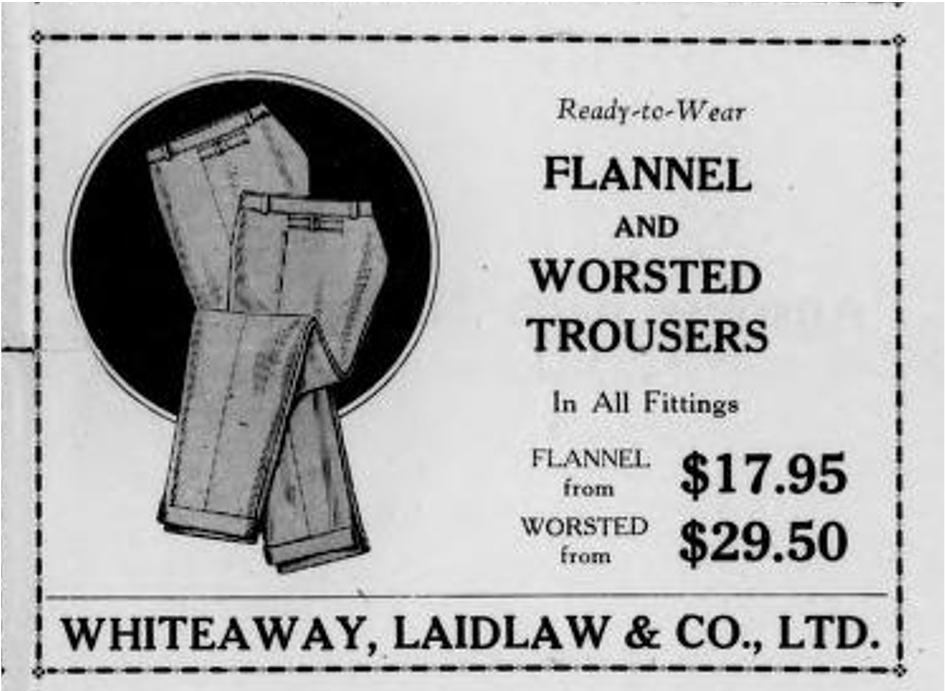
Advertisement, Whiteaway, Laidlaw & Co., Shanghai Woche, no. 1, 5 April 1939, p. 4. 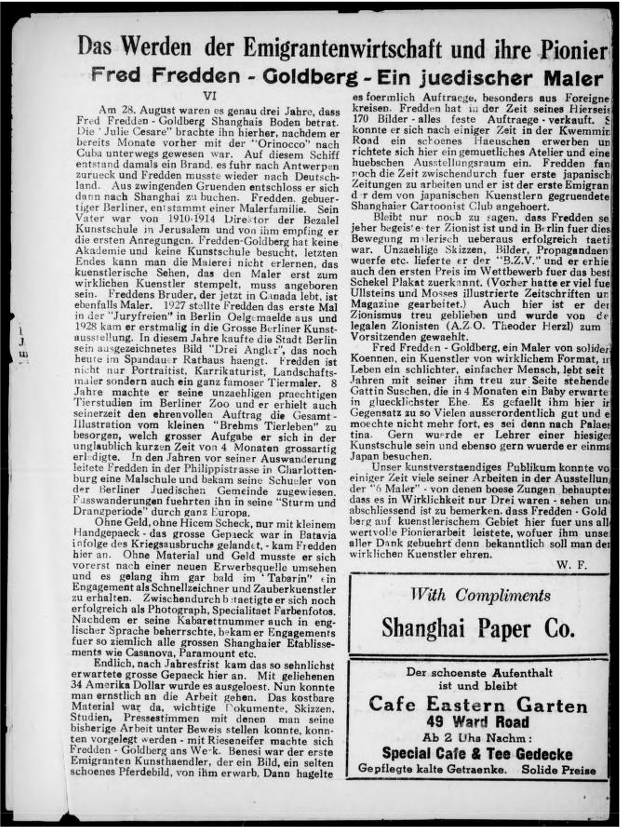
W. F. (Wolfgang Fischer) “Das Werden der Emigrantenwirtschaft und ihre Pioniere. Fred Fredden-Goldberg – Ein juedischer Maler.“ Shanghai Woche, no. 13, 4 September 1942, p. 4. 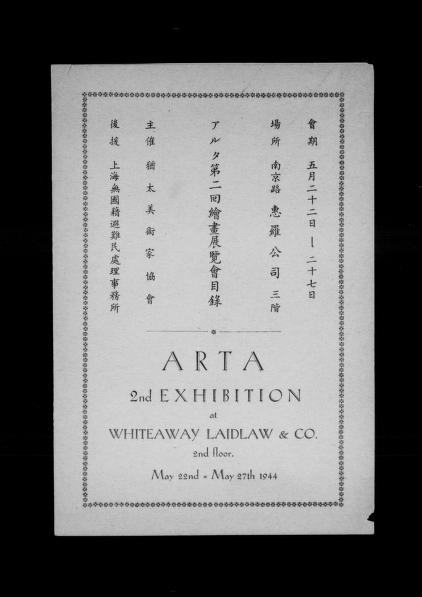
Catalogue, ARTA 2nd Exhibition, front, Whiteaway Laidlaw & Co., 22–27 May 1944, Shanghai, David Ludwig Bloch Collection (© Leo Baeck Institute, New York). 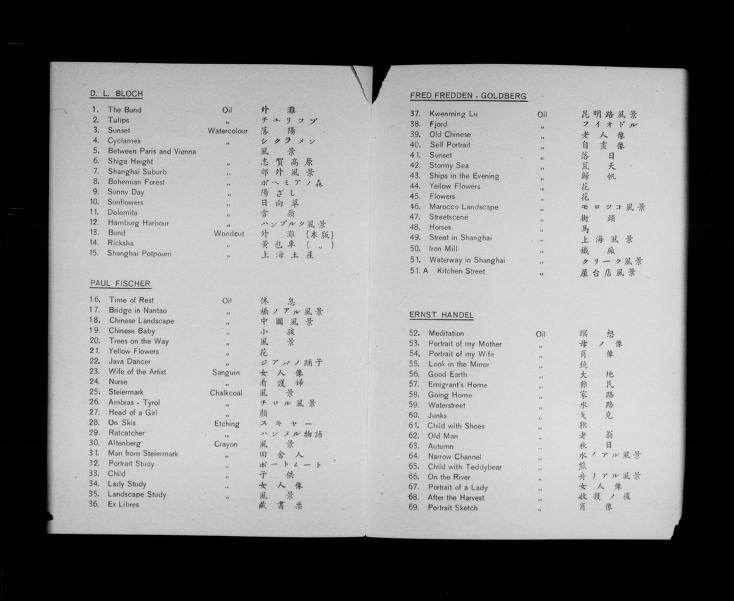
Catalogue, ARTA 2nd Exhibition, double page, Whiteaway Laidlaw & Co., 22–27 May 1944, Shanghai, David Ludwig Bloch Collection (© Leo Baeck Institute, New York). 
Catalogue, ARTA 2nd Exhibition, back, Whiteaway Laidlaw & Co., 22–27 May 1944, Shanghai, David Ludwig Bloch Collection (© Leo Baeck Institute, New York). Ebner, Irene. Jewish Refugees in Shanghai 1933–1947. A Selection of Documents. Archiv jüdischer Geschichte und Kultur. vol. 3, Vandenhoeck & Ruprecht, 2018.
Freyeisen, Astrid. Shanghai und die Politik des Dritten Reichs. Königshausen & Neumann 1999.
Kranzler, David. "Restrictions Against German-Jewish Refugee Immigration to Shanghai in 1939.” Jewish Social Studies, vol. 36, no. 1, 1974, pp. 40–60.
Pan, Guan. A Study of Jewish Refugees in China (1933–1945). Histories, Theories and the Chinese Pattern. Shanghai Jiao Tong University Press/Springer, 2019.Word Count: 70
Leo Baeck Institute, New York, David Ludwig Bloch Collection.
Akademie der Schönen Künste, Berlin, Alfred Dreifuß Archive.Word Count: 19
- 1943
- 1948
David Ludwig Bloch, Paul Fischer, Fred Fredden Goldberg, Ernst Handl, Max Heimann, Hans Jacoby and Alfred Mark
- Shanghai
- Mareike Hetschold. "Association of Jewish Artists and Fine Art Lovers (ARTA)." METROMOD Archive, 2021, https://archive.metromod.net/viewer.p/69/2952/object/5145-8103911, last modified: 14-09-2021.
-
David Ludwig BlochArtistShanghai
David Ludwig Bloch is known for his paintings and watercolours revolving around the Holocaust and his exile. With the woodcuts from his time in exile in Shanghai, Bloch created an artistic account of everyday life in the city, while harvesting the simplicity of form and colour of the medium.
Word Count: 49
Hans JacobyArtistShanghaiHans Jacoby fled in 1938 to the Netherlands, where he was interned by the Dutch government in Hook of Holland. He was able to leave the camp and arrived, together with his wife Emma Jacoby, in Shanghai in 1940 where he continued to work as an artist.
Word Count: 45
Shanghai LifeBookShanghaiShanghai Life was the first book published by the newly-founded Shanghai Cartoonist Club (March 7, 1942). The club held its first exhibition in June of the same year, at the Shanghai Art Gallery on Nanking Road (now Nanjing Dong Lu).
Word Count: 38
Richard PaulickArchitectDesignerShanghaiAfter studying with Hans Poelzig, Richard Paulick worked in Walter Gropius’s office and frequented the Bauhaus in Dessau before emigrating to Shanghai in 1933. After his return, he became an influential planner and architect in the GDR, from 1950 until his retirement
Word Count: 41
John L. IsaackDesignerArtistShanghaiJohn Isaack studied for a year and a half at the Academy of Fine Arts in Berlin before joining an advertising, stage and fair design company. He arrived in Shanghai in 1939 and found work as a graphic artist at Adcraft an advertising agency before being forced to move into the designated refugee area in Hongkou.
Word Count: 55